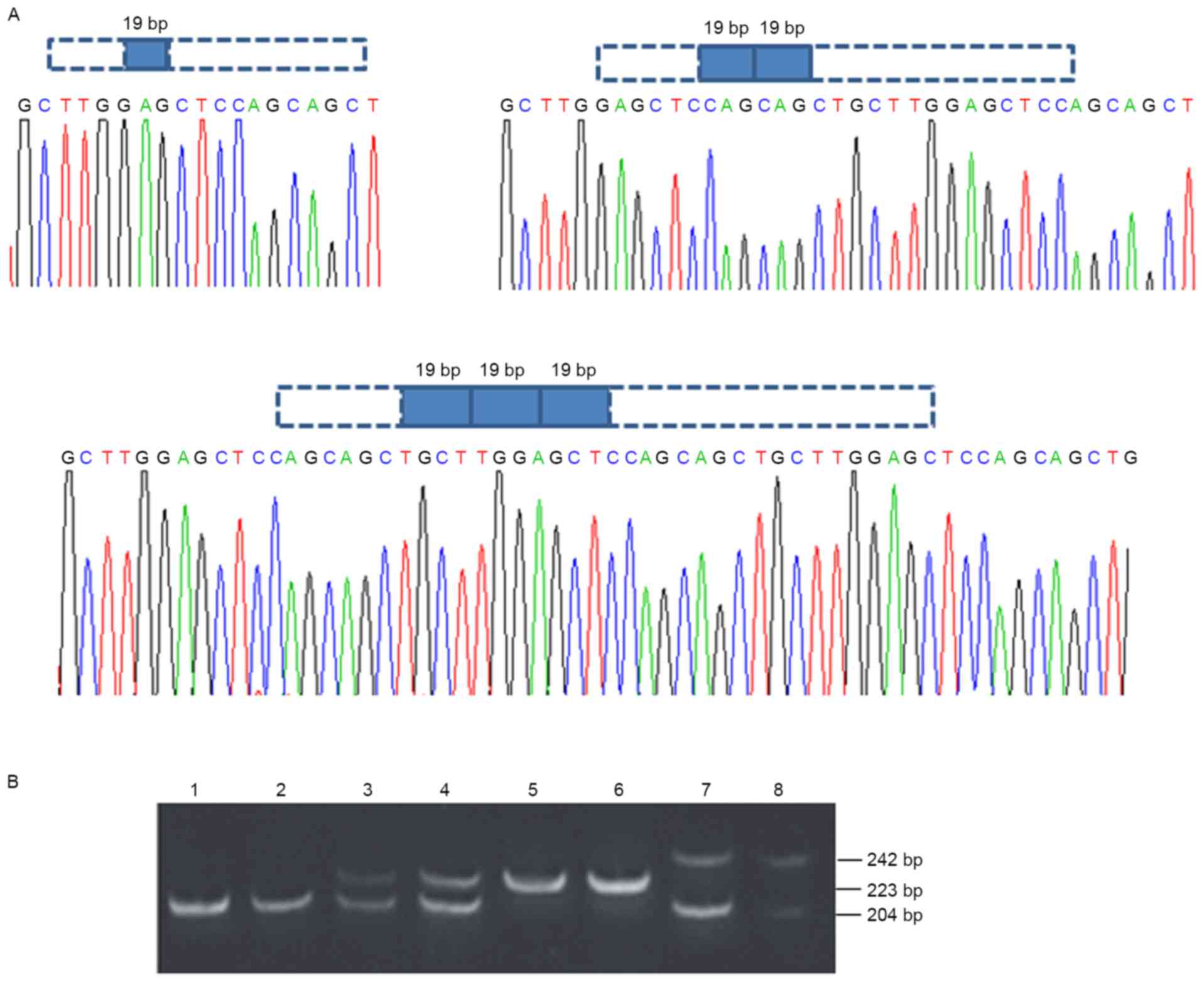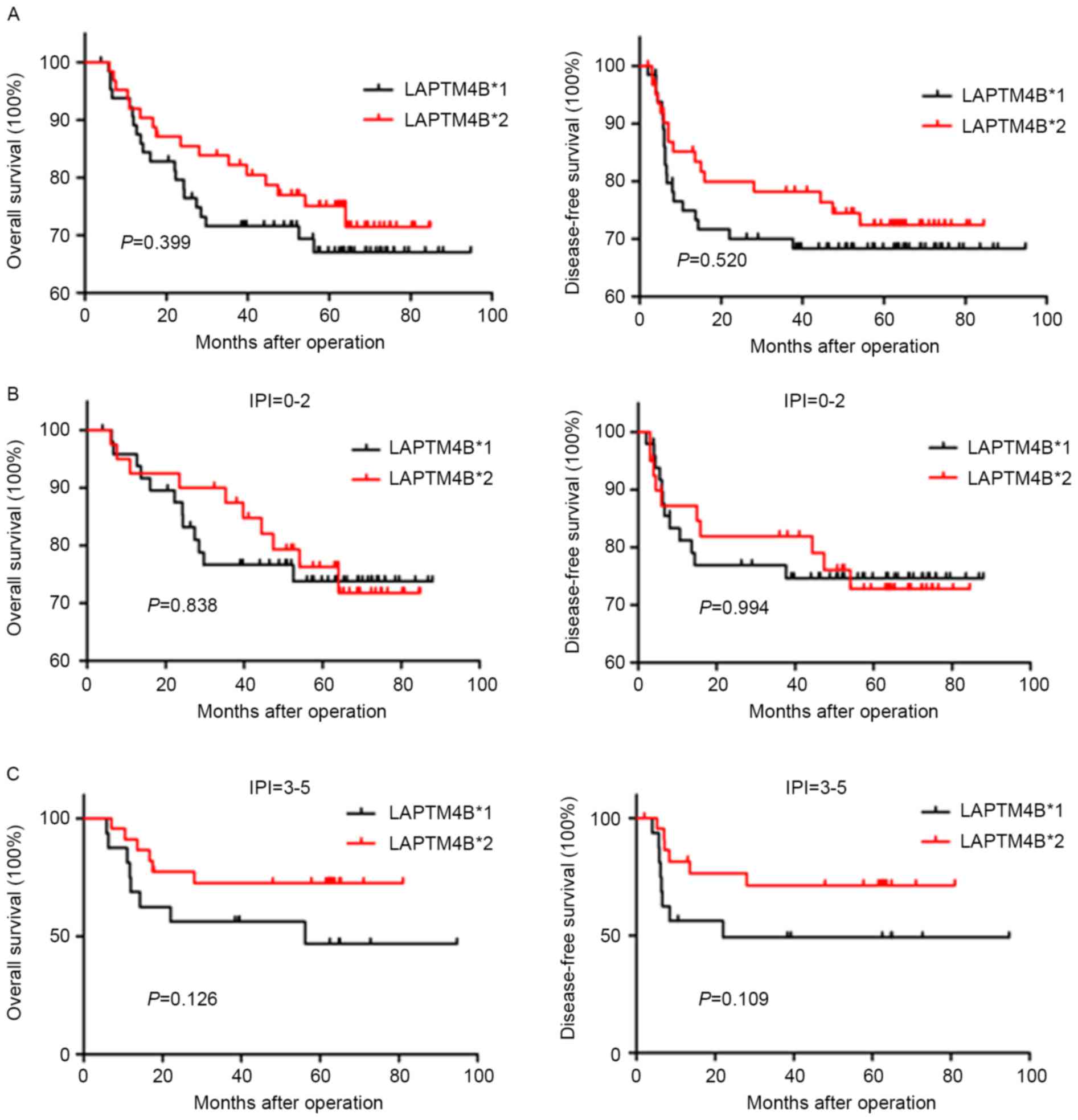|
1
|
International Agency for Research on
Cancer, . World Cancer Report 2014. http://publications.iarc.fr/Non-Series-Publications/World-Cancer-Reports/World-Cancer-Report-2014July.
2014
|
|
2
|
Sehn LH, Donaldson J, Chhanabhai M,
Fitzgerald C, Gill K, Klasa R, MacPherson N, O'Reilly S, Spinelli
JJ, Sutherland J, et al: Introduction of combined CHOP plus
rituximab therapy dramatically improved outcome of diffuse large
B-cell lymphoma in British Columbia. J Clin Oncol. 23:5027–5033.
2005. View Article : Google Scholar : PubMed/NCBI
|
|
3
|
Perry AR and Goldstone AH: High-dose
therapy for diffuse large-cell lymphoma in first remission. Ann
Oncol. 9 Suppl 1:S9–S14. 1998. View Article : Google Scholar : PubMed/NCBI
|
|
4
|
Fisher RL, Gaynor ER, Dahlberg S, Oken MM,
Grogan TM, Mize EM, Glick JH, Coltman CA Jr and Miller TP:
Comparison of a standard regimen (CHOP) with three intensive
chemotherapy regimens for advanced non-Hodgkin's lymphoma. N Engl J
Med. 328:1002–1006. 1993. View Article : Google Scholar : PubMed/NCBI
|
|
5
|
International Non-Hodgkin's Lymphoma
Prognostic Factors Project: A predictive model for aggressive
non-Hodgkin's lymphoma. N Engl J Med. 329:987–994. 1993. View Article : Google Scholar : PubMed/NCBI
|
|
6
|
Ruzinova MB, Caron T and Rodig SJ: Altered
subcellular localization of c-Myc protein identifies aggressive
B-cell lymphomas harboring a c-MYC translocation. Am J Surg Pathol.
34:882–891. 2010. View Article : Google Scholar : PubMed/NCBI
|
|
7
|
Zhou Z, Sehn LH, Rademaker AW, Gordon LI,
Lacasce AS, Crosby-Thompson A, Vanderplas A, Zelenetz AD, Abel GA,
Rodriguez MA, et al: An enhanced International Prognostic Index
(NCCN-IPI) for patients with diffuse large B-cell lymphoma treated
in the rituximab era. Blood. 123:837–842. 2014. View Article : Google Scholar : PubMed/NCBI
|
|
8
|
Shao GZ, Zhou RL, Zhang QY, Zhang Y, Liu
JJ, Rui JA, Wei X and Ye DX: Molecular cloning and characterization
of LAPTM4B, a novel gene unregulated in hepatocellular carcinoma.
Oncogene. 22:5060–5069. 2003. View Article : Google Scholar : PubMed/NCBI
|
|
9
|
Deng LJ, Zhang QY, Liu B and Zhou RL:
Relationship between LAPTM4B gene polymorphism and susceptibility
of lung cancer. Beijing Da Xue Xue Bao. 37:302–505. 2005.(In
Chinese). PubMed/NCBI
|
|
10
|
Fan M, Liu Y, Zhou R and Zhang Q:
Association of LAPTM4B gene polymorphism with breast cancer
susceptibility. Cancer Epidemiol. 36:364–368. 2012. View Article : Google Scholar : PubMed/NCBI
|
|
11
|
Liu Y, Zhang QY, Qian N and Zhou RL:
Relationship between LAPTM4B gene polymorphism and susceptibility
of gastric cancer. Ann Oncol. 18:311–316. 2007. View Article : Google Scholar : PubMed/NCBI
|
|
12
|
Cheng XJ, Xu W, Zhang QY and Zhou RL:
Relationship between LAPTM4B gene polymorphism and susceptibility
of colorectal and esophageal cancers. Ann Oncol. 19:527–532. 2008.
View Article : Google Scholar : PubMed/NCBI
|
|
13
|
Xu Y, Liu Y, Zhou R, Meng F, Gao Y, Yang
S, Li X, Yang M and Lou G: LAPTM4B polymorphisms is associated with
ovarian cancer susceptibility and its prognosis. Jpn J Clin Oncol.
42:413–419. 2012. View Article : Google Scholar : PubMed/NCBI
|
|
14
|
Li C, Zhou Q, Wang Y, Chen X, Yang X and
Zhu D: Relationship between LAPTM4B gene polymorphism and
susceptibility of lung cancer. Zhongguo Fei Ai Za Zhi. 9:109–112.
2006.(In Chinese). PubMed/NCBI
|
|
15
|
Wang S, Zhang QY and Zhou RL: Relationship
between LAPTM4B gene polymorphism and susceptibility of primary
liver cancer. Ann Oncol. 23:1864–1869. 2012. View Article : Google Scholar : PubMed/NCBI
|
|
16
|
Wang B, Xu J, Zhou R and Zhang Q:
Association of LAPTM4B gene polymorphism with nasopharyngeal
carcinoma susceptibility in a Chinese population. Med Oncol.
30:4702013. View Article : Google Scholar : PubMed/NCBI
|
|
17
|
Yang H, Zhai G, Ji X, Xiong F, Su J and
McNutt MA: LAPTM4B allele *2 is a marker of poor prognosis
following hepatic tumor resection for hepatocellular carcinoma.
PLoS One. 7:e349842012. View Article : Google Scholar : PubMed/NCBI
|
|
18
|
Tang H, Tian H, Yue W, Li L, Li S, Gao C,
Si L, Qi L, Lu M and Hu W: LAPTM4B polymorphism is associated with
non-small cell lung cancer susceptibility and prognosis. Oncol Rep.
31:2454–2460. 2014. View Article : Google Scholar : PubMed/NCBI
|
|
19
|
Meng F, Li H, Zhou R, Luo C, Hu Y and Lou
G: LAPTM4B gene polymorphism and endometrial carcinoma risk and
prognosis. Biomarkers. 18:136–43. 2013. View Article : Google Scholar : PubMed/NCBI
|
|
20
|
Narayanan S and Savage KJ: Staging and
prognostic factorsNon-Hodgkin Lymphomas. Armitage JO, Mauch PM,
Harris NL, Coiffier B and Dalla-Favera R: 2nd. Lippincott Williams
& Wilkins; Philadelphia, PA: pp. 149–171. 2010
|
|
21
|
Li X, Kong X, Chen X, Zhang N, Jiang L, Ma
T and Yang Q: LAPTM4B allele *2 is associated with breast cancer
susceptibility and prognosis. PLoS One. 7:e449162012. View Article : Google Scholar : PubMed/NCBI
|
|
22
|
Liu XR, Zhou RL, Zhang QY, Zhang Y, Jin
YY, Lin M, Rui JA and Ye DX: Structure analysis and expressions of
a novel tetratransmembrane protein, lysosoma-associated protein
transmembrane 4 beta associated with hepatocellular carcinoma.
World J Gastroenterol. 10:1555–1559. 2004. View Article : Google Scholar : PubMed/NCBI
|
|
23
|
Li L, Wei XH, Pan YP, Li HC, Yang H, He
QH, Pang Y, Shan Y, Xiong FX, Shao GZ and Zhou RL: LAPTM4B: A novel
cancer-associated gene motivates multidrug resistance through
efflux and activating PI3K/AKT signaling. Oncogene. 29:5785–5795.
2010. View Article : Google Scholar : PubMed/NCBI
|
|
24
|
Liu X, Zhou R, Zhang Q, Zhang Y, Shao G,
Jin Y, Zhang S, Lin M, Rui J and Ye D: Identification and
characterization of LAPTM4B encoded by a human hepatocellular
carcinoma-associated novel gene. Beijing Da Xue Xue Bao.
35:340–347. 2003.(In Chinese). PubMed/NCBI
|
|
25
|
He J, Shao G and Zhou R: Effects of the
novel gene, LAPTM4B, highly expression in hepatocellular carcinoma
on cell proliferation and tumorigenesis of NIH3T3 cells. Beijing Da
Xue Xue Bao. 35:348–352. 2003.(In Chinese). PubMed/NCBI
|
|
26
|
Yang H, Xiong F, Wei X, Yang Y, McNutt MA
and Zhou R: Overexpression of LAPTM4B-35 promotes growth and
metastasis of hepatocellular carcinoma in vitro and in vivo. Cancer
Lett. 294:236–244. 2010. View Article : Google Scholar : PubMed/NCBI
|
|
27
|
Zhou L, He XD, Yu JC, Zhou RL, Shan Y and
Rui JA: Overexpression of LAPTM4B-35 attenuates epirubucin-induced
apoptosis of gallbladder carcinoma GBC-SD cells. Surgery.
150:25–31. 2011. View Article : Google Scholar : PubMed/NCBI
|
|
28
|
Shao GZ, Zhou RL, Zhang QY, Zhang Y, Liu
JJ, Rui JA, Wei X and Ye DX: Molecular cloning and characterization
of LAPTM4B, a novel gene upregulated in hepatocellular carcinoma.
Oncogene. 22:5060–5069. 2003. View Article : Google Scholar : PubMed/NCBI
|
|
29
|
Milkereit R, Persaud A, Vanoaica L, Guetg
A, Verrey F and Rotin D: LAPTM4b recruits the LAT1-4F2hc Leu
transporter to lysosomes and promotes mTORC1 activation. Nat
Commun. 6:72502015. View Article : Google Scholar : PubMed/NCBI
|
|
30
|
Huygens C, Lienart S, Dedobbeleer O,
Stockis J, Gauthy E, Coulie PG and Lucas S: Lysosomal-associated
Transmembrane Protein 4B (LAPTM4B) Decreases Transforming Growth
Factor β1 (TGF-β1) Production in Human Regulatory T Cells. J Biol
Chem. 290:20105–20116. 2015. View Article : Google Scholar : PubMed/NCBI
|
|
31
|
Xiao M, Jia S, Wang H, Wang J, Huang Y and
Li Z: Overexpression of LAPTM4B: An independent prognostic marker
in breast cancer. J Cancer Res Clin Oncol. 139:661–667. 2013.
View Article : Google Scholar : PubMed/NCBI
|
|
32
|
Zhai G, Yan K, Ji X, Xu W, Yang J, Xiong
F, Su J, McNutt MA and Yang H: LAPTM4B allele *2 is a marker of
poor prognosis for gallbladder carcinoma. PLoS One. 7:e452902012.
View Article : Google Scholar : PubMed/NCBI
|
|
33
|
Sehn LH, Berry B, Chhanabhai M, Fitzgerald
C, Gill K, Hoskins P, Klasa R, Savage KJ, Shenkier T, Sutherland J,
et al: The revised international prognostic index (R-IPI) is a
better predictor of outcome than the standard IPI for patients with
diffuse large B-cell lymphoma treated with R-CHOP. Blood.
109:1857–1861. 2007. View Article : Google Scholar : PubMed/NCBI
|











